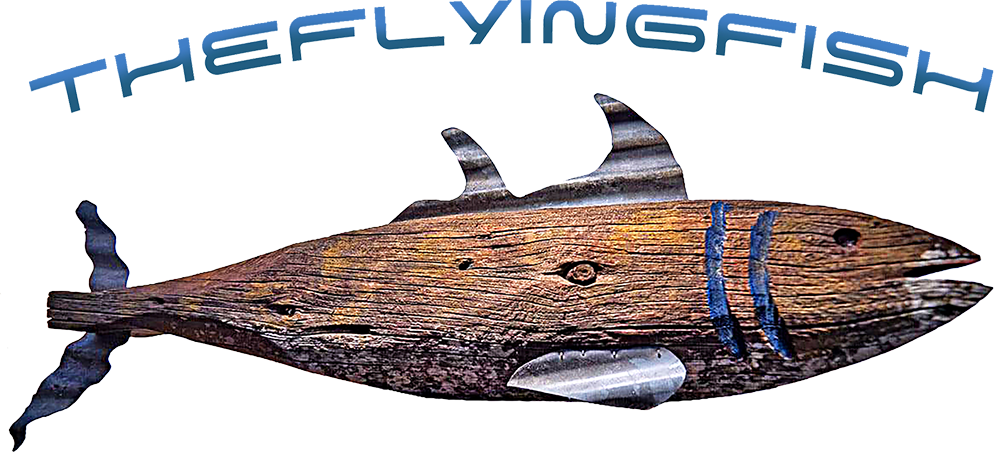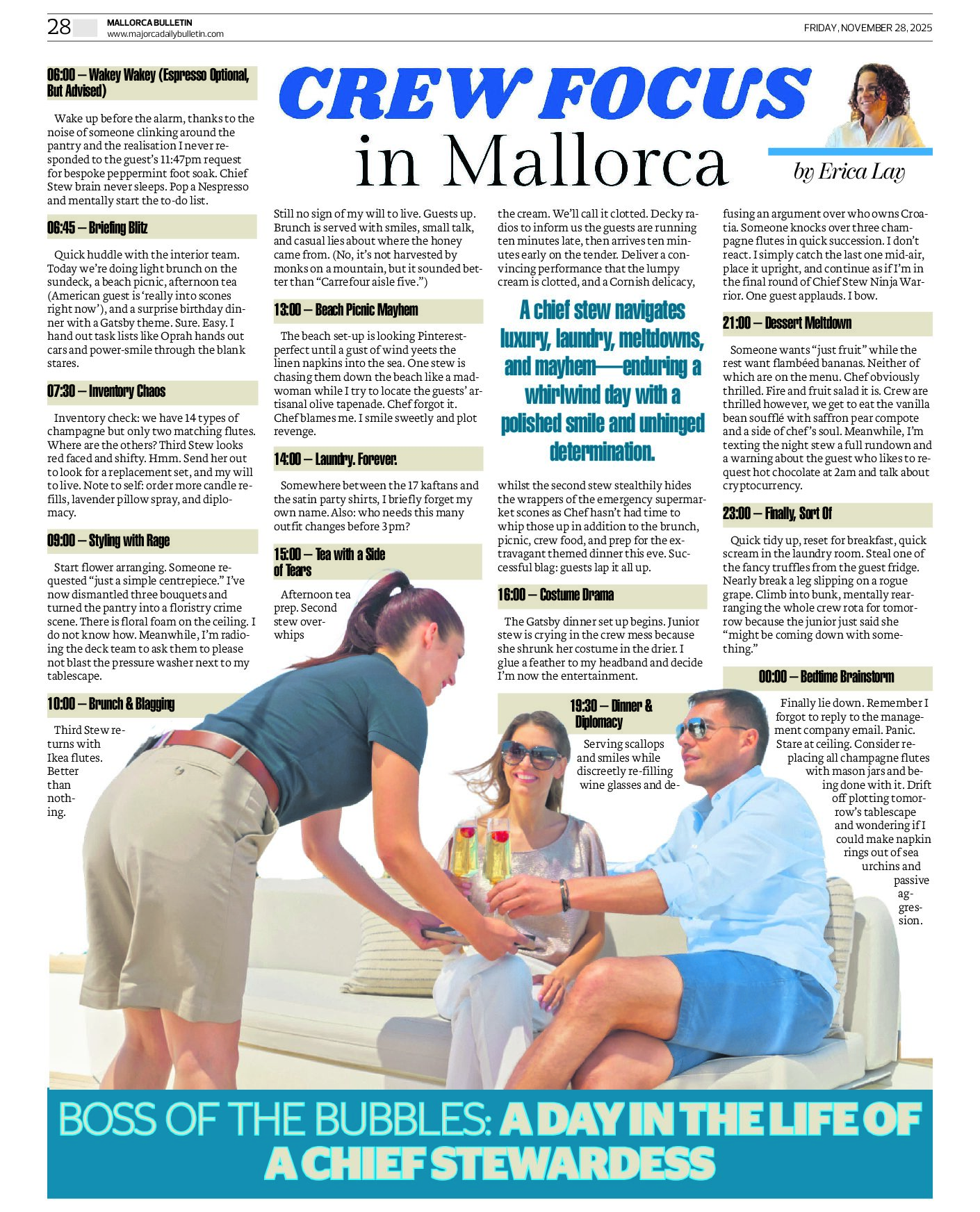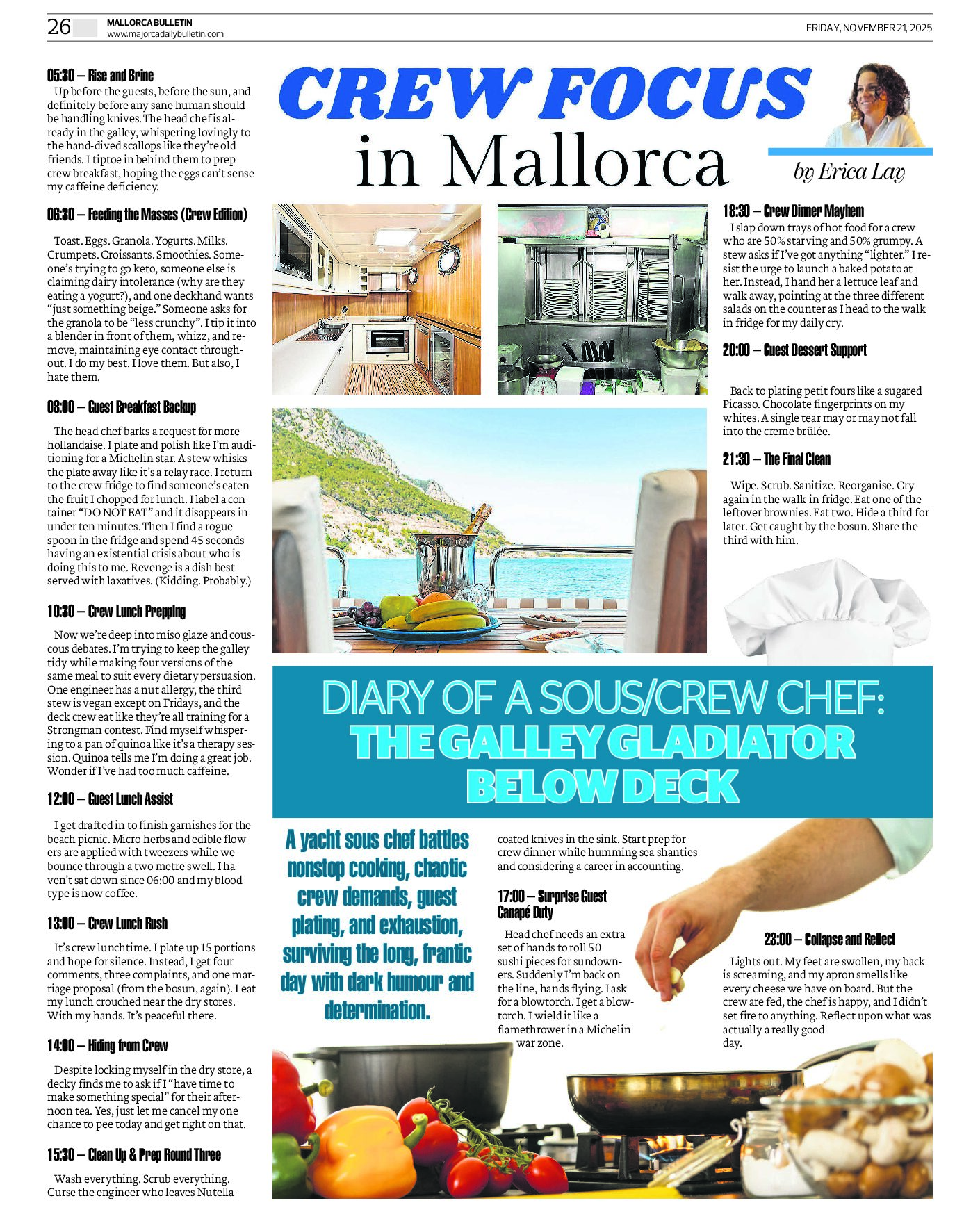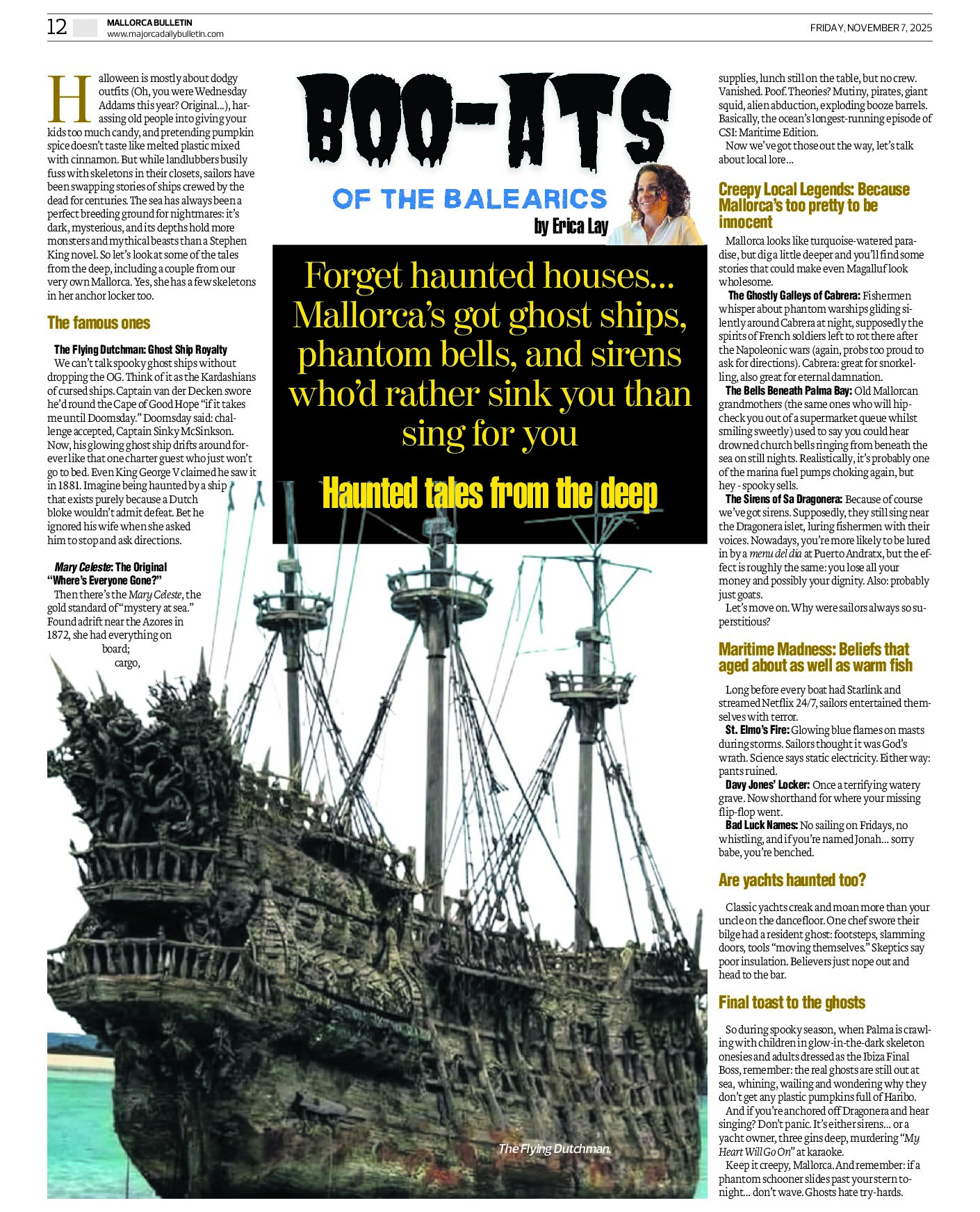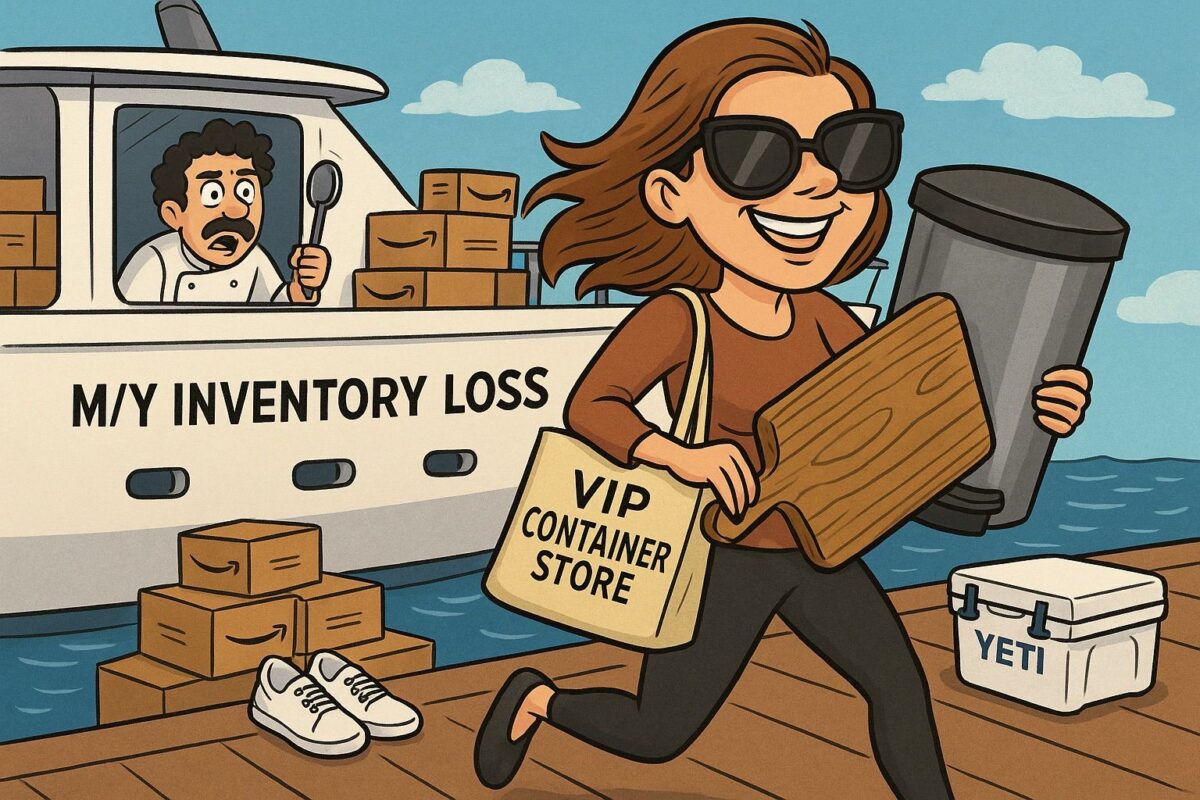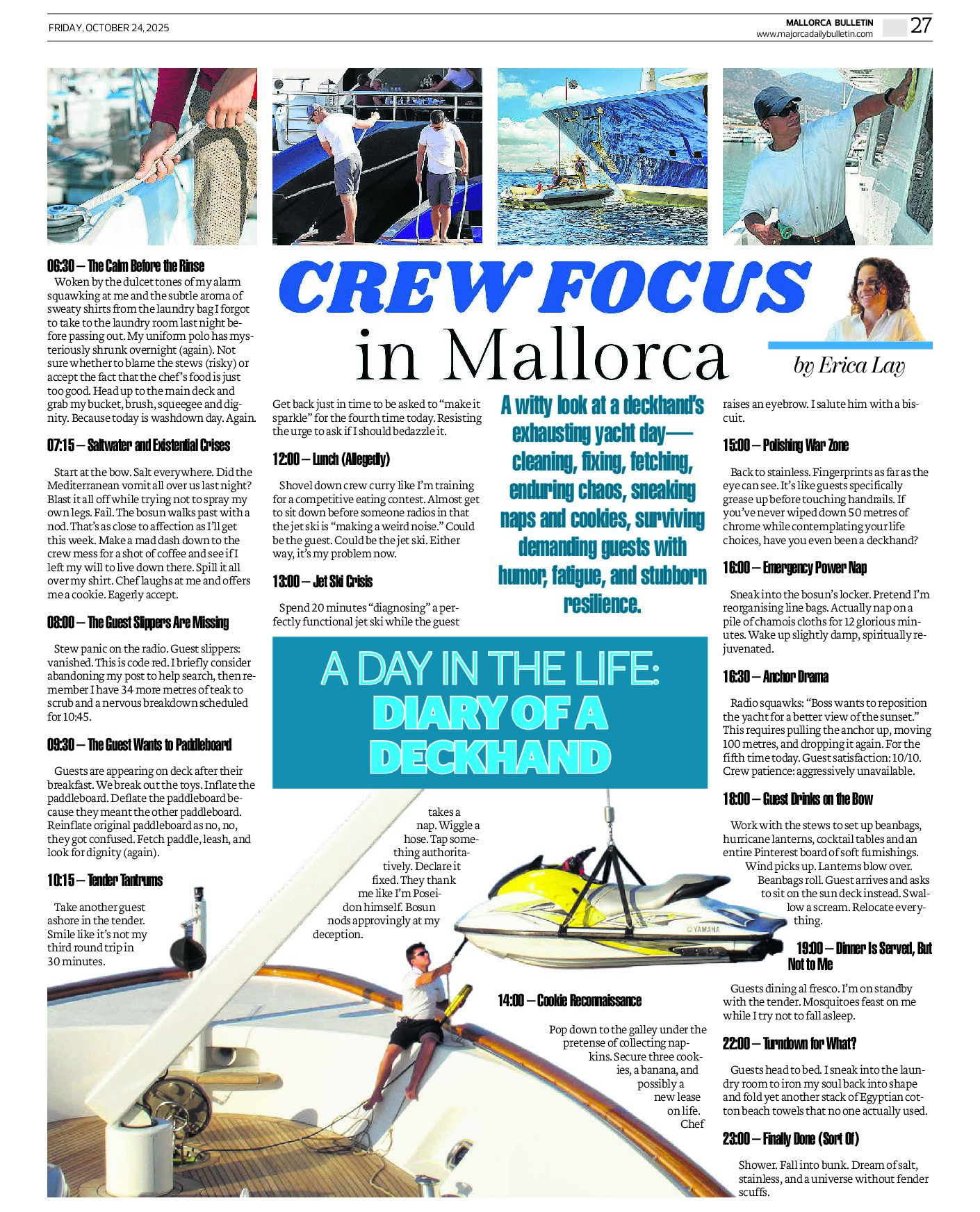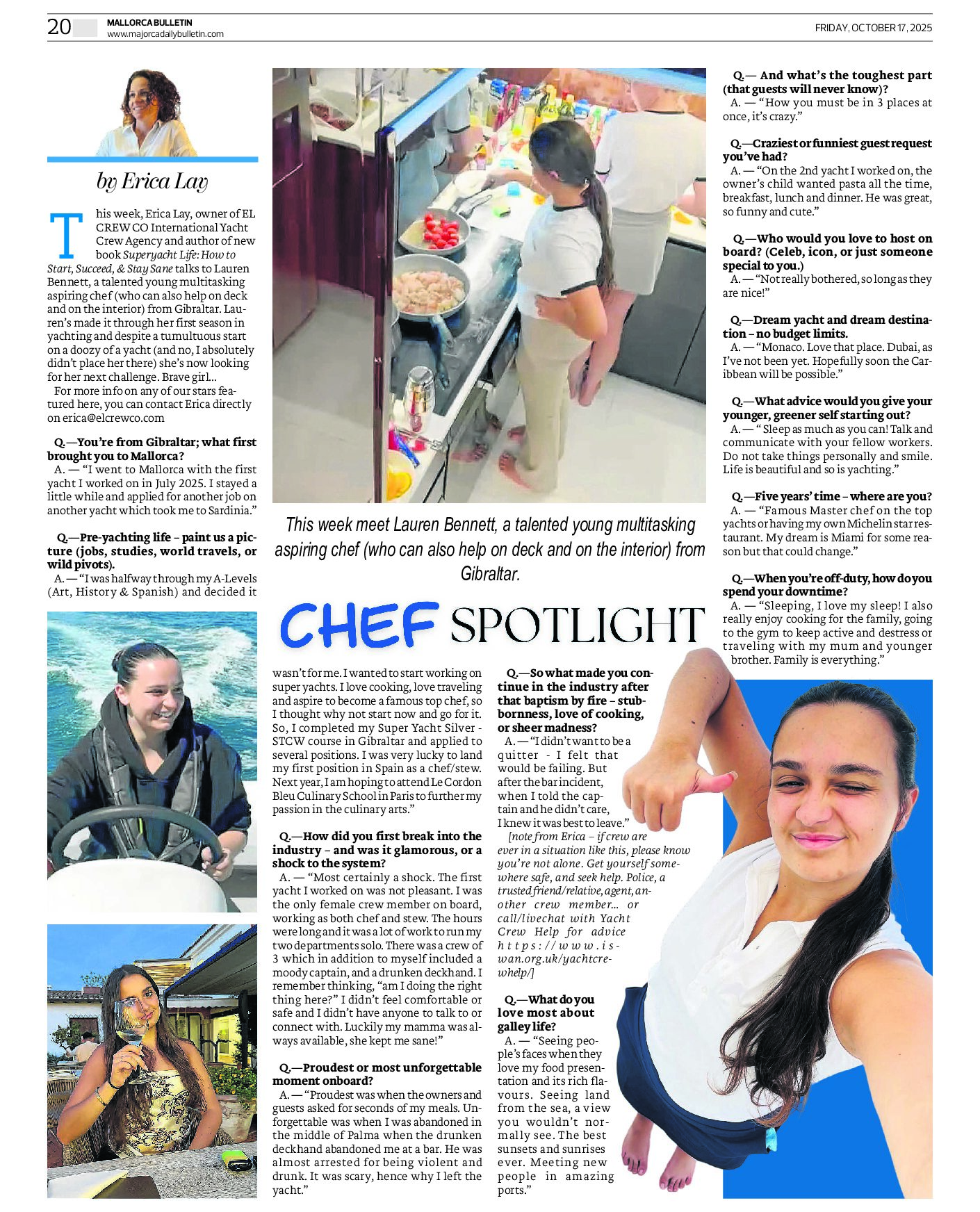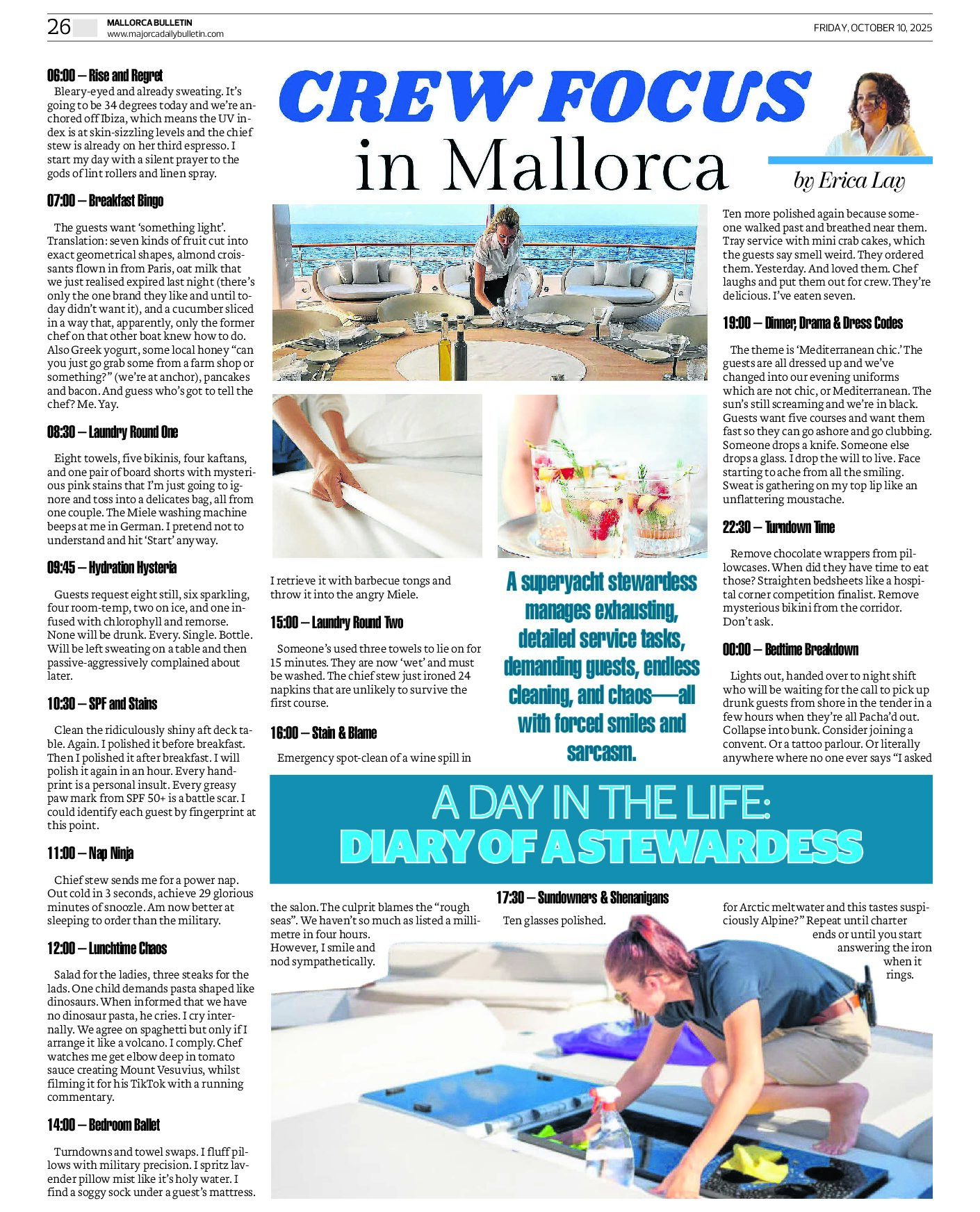By Chef Raffie. #25/1104.
Disclaimer: Any resemblance to real yachts, real people, or real disasters is purely coincidental… though if you happen to recognize yourself, congratulations — you’ve officially inspired art.
The Gospel According to Jocelin: Patron Saint of Shiny Trash Cans
Some say she was 32. Others swore she looked 12. Either way, Jocelin Achieves, as she called herself, had mastered the ancient art of faking it until you steal a cutting board.
She claimed to have worked on 80m, 90m yachts — mega-yachts, darling — but couldn’t tell a port side from a pork chop. I asked her once how many liters in a gallon — she blinked twice, allergic to the question. (She’s allergic to everything, by the way. Except designer yoga pants and designer lies.)
Let’s be fair. Jocelin had many talents. Interviewing, for example. She interviewed better than a CIA double agent. She could convince you she invented lemon water. And if you questioned her, she’d just say: “It’s because I’m highly intuitive. And Scorpio.”
Amazon Prime Minister of Provisions
Now provisioning… ah yes… provisioning was her kingdom.
While I was trying to keep provisions realistic — you know, for a two-week boss trip with four kids and a golden doodle — Jocelin shopped as if she were preparing for Armageddon hosted at Burning Man.
“Two beach umbrellas?”
“No Chef, we need SIX. Three for the boat, three for my… I mean… for backup.”
Laundry detergent? Enough to outlive a nuclear war.
Deck shoes? Rotated quarterly like tires on a Ferrari — because nothing says “guest-ready” like new Sperrys every full moon.
Yeti coolers? “Let’s get two, in case one breaks. Or melts. Or floats away in a hurricane.”
And the best part? The extras always had a destination: her house. She said it was “in case we run out, we don’t need to re-provision — just swing by my place, I have a backup pantry.”
You mean… Costco Warehouse North, located at Casa Jocelin.
The Trash Can Heard Around the Dock
Let’s talk about that trash can. A $300 voice-activated robotic trash can that lit up like a spaceship when you approached it. It talked, opened with grace, and probably knew your zodiac sign.
It lasted two months.
Then Jocelin said: “It’s defective. We have to return it.”
The new one arrived. But the old one?
Last seen in Jocelin’s kitchen, housing “organic-only” waste and the dreams of honest yachties everywhere.
Same thing happened with my oak cutting board — three months of seasoning, oiling, bonding with it like it was my firstborn. One day she declared:
“Chef, it’s not visually appealing anymore. The Mrs. wants everything to look new.”
Guess where it went?
Yes. Her house. Next to my frying pan. And my soul.
Christmas Came Early… For Her Entire Family
During the holidays, the crew noticed something strange.
Jocelin was gifting brand new deck shoes to her family. Different sizes. Different colors.
“Wow! So thoughtful!” they said.
Yes, thoughtful indeed — straight from the boat’s Amazon orders, re-gifted with wrapping paper and guilt-free charm.
There were stories of provisioning miracles — snacks disappearing mid-charter only to reappear in her air-conditioned Tupperware closet. And that mystical gallon of almond milk that cost $30 — always one for the boat… and one for home, of course.
Let’s not forget the time she ordered eight brand-new pillows because “the old ones absorbed too many negative emotions.” Naturally, the “used” ones found shelter in her guest bedroom. Sustainability, Jocelin-style.
In Jocelin We Store
She had a lifetime membership at The Container Store. I’m convinced she didn’t just shop there — she was stockpiling for the apocalypse.
We needed one cooler. She bought four.
A new mop? Why not two.
Sunscreen? Gallons.
Tampons? Costco crates.
And always, always… she said:
“Better to have it and not need it, than to need it and not have it.”
Unless it’s honesty. That, apparently, she could live without.
The Jocelin Effect
After a year, we realized something.
The boat always looked sparkling. Everything was new. She was always glowing… because her entire house was fully furnished courtesy of the yacht’s Amazon Prime wish list.
She didn’t just steal stuff.
She manifested it.
She didn’t just over-order.
She achieved it.
And when she left? She called it “graduating.”
We just called it relief.
Final Credits
So next time someone says “fake it till you make it,” just ask:
“You mean like Jocelin — the Patron Saint of Prime Deliveries, Trash Can Thief, and Cutting Board Collector of the Caribbean?”
Because she didn’t just fake it.
She made it sparkle.
And took it home.
